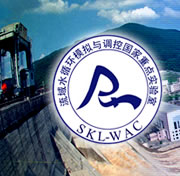《wetlands Ecology and Mangement》杂志刊登“坦桑尼亚Usangu湿地植被在水量平衡中的作用”
作者:E.Kihwele、B.Manya、G.Meng ataki
刊物:《wetlands Ecology and Mangement》,2012年,20卷第五期,389—398页
关键词:水量平衡、植被覆盖、雷达、地面水高度、灌溉、牲畜、蒸发
摘要:由于牲畜饮用以及上游水稻灌溉引起的水量减少,Usangu湿地在过去的20年间严重退化。东Usangu湿地曾经常年有水,但是,在2000和2002年干旱季节已经干涸。2006年,牲畜从东Usangu湿地迁出,自此之后,常年性湿地得到重建,到2011年,植被得以恢复,潮湿表面的覆盖率达到95%,主要是浮游植物。随着牲畜的转移,进入大鲁阿河的水量几乎翻了一番。研究表明这可能是由于浮游植物对水面的遮挡造成的,使得净蒸发量对比露天水域的蒸发量(1cm/天)减少了0.5cm/天。这表明生物在控制水量平衡中扮演了重要角色。这些湿地是重要的水源,其在水量平衡的控制方面具有重要的生物学作用。相比之下,位于上游的牲畜和水稻田未从西Usangu湿地迁出,如今湿地已减少为河流边缘很少的区域。我们建议,也应该修复西Usangu湿地,从而可以大大增加大鲁阿哈河的流量。与此同时,因为目前水量不能满足坦桑尼亚国家水力发电、沿河用水户以及重要的海岸湿地(拉菲亚三角洲)在干旱年的用水需要,流域水管理以及Usangu湿地上游灌溉面积的管理也是迫切需要的。
The role of vegetation in the water budget of the Usangu wetlands, Tanzania
Authors: E. Kihwele、B. Manya、G.Meng ataki
Journal: wetland ecology and mangemant, volume 20,2012 Key words: water budget; Vegeration cover; Radar altimetry; Suface water height; Irrigation; Cattle; Evaporation
Abstract: The Usangu wetlands were severely degraded over the last twenty years by cattle and the shortage of water due to rice irrigation upstream. The eastern Usangu wetlands that were previously perennial dried out in 2000 and 2002 in the dry season. Following the removal of cattle in 2006 from the eastern Usangu wetlands, perennial wetlands has re-established itself and in 2011 the vegetation had recovered and covered about 95 % of the wetted surface mainly as floating vegetation. These wetlands are the source of water suggests the important role of the biology in controlling the water budget. By contrast cattle and rice farms have not been removed from the western Usangu wetlands, located upstream, where the wetlands are now reduced to small areas fringing the rivers. We suggest that the western Usangu wetlands should also be restored in order to further increase flows in the Great Ruaha River. At the same time water governance in the catchments and irrigation areas upstream of Usangu wetlands is also urgently required because present water yields are insufficient to meet the hydroelectric needs of Tanzania, the water users all along the river, as well as the important coastal wetlands associated with the Rufiji Delta during a drought year.
原文链接:http://link.springer.com/article/10.1007/s11273-012-9260-8#page-1
翻译:刘金轲;审稿:翟家齐

